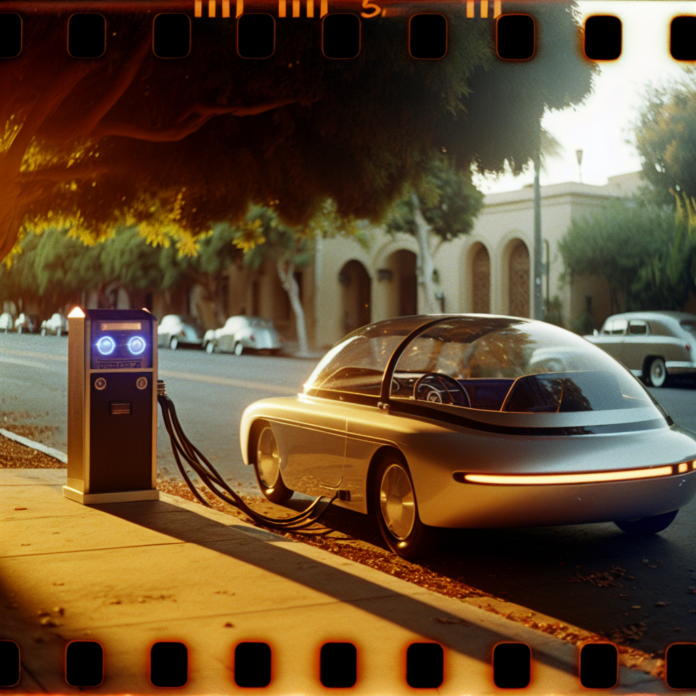Revolutionary Battery Breakthrough Poised to Transform the Auto Industry
A New Era for Electric Vehicles: Game-Changing Battery Technology Emerges
The automotive industry stands at the brink of a historic transformation, driven by a groundbreaking battery breakthrough that promises to address some of the biggest challenges plaguing electric vehicles (EVs). From range anxiety to long charging times and high costs, the automotive sector has long grappled with battery limitations—until now.
This recent innovation is generating buzz across the tech and automotive sectors and could significantly upend the industry’s trajectory. The new battery technology, developed by leading scientists and backed by major tech companies, brings faster charging, longer range, and improved safety, setting the stage for a seismic shift in how we think about transportation.
Solid-State Batteries: The Future of EV Power
What Are Solid-State Batteries?
Unlike traditional lithium-ion batteries that use liquid electrolytes, solid-state batteries use solid materials to transport ions between the cathode and anode. This alternative design has been touted for years as a holy grail for energy storage, but cost, scalability, and performance issues held back mass production—until recently.
The breakthrough centers on a new-generation solid-state battery that overcomes the common issues of dendrite formation (which compromises safety) and material degradation. These new batteries promise:
- Up to 500% longer lifespan than current lithium-ion batteries
- Twice the energy density
- Faster charging – as little as 10 minutes to reach 80% charge
- Improved safety due to non-flammable solid electrolytes
Key Innovators Behind the Breakthrough
This new wave of innovation has seen collaboration among top-tier research institutions and tech-savvy automotive companies. Startups like QuantumScape, backed by Volkswagen and Bill Gates, have made significant strides, while Toyota and Samsung are also racing to commercialize solid-state battery technology for mass production as early as 2025.
More notably, American researchers have developed a scalable manufacturing technique that reduces costs significantly, possibly eliminating the economic obstacle that has stymied wide-scale deployment of solid-state batteries.
How the Battery Revolution Impacts Automakers
Transforming EV Economics
One of the primary barriers to EV adoption has been high cost. Battery packs account for 30–40% of an electric car’s total price. The breakthrough in battery technology could reduce costs by half, making electric vehicles more affordable for mainstream drivers.
Lower costs won’t just benefit consumers—they’ll transform the competitive landscape. Automakers who adopt this new battery technology early could gain a substantial edge in a highly saturated global EV market. Expect car prices to fall, EV ranges to climb, and charging infrastructure to evolve just as quickly.
Driving Range and Charging Efficiency
Currently, many EVs are limited to 200–300 miles on a full charge. With the improved energy density of solid-state batteries, future EVs could easily surpass 600 miles, rivaling and exceeding many gas-powered vehicles. In a world increasingly concerned with environmental sustainability, this added range is a game changer.
Moreover, faster charging times eliminate the need for long waits at charging stations—another sticking point for hesitant consumers. With advanced battery tech, refueling could take as little time as filling up a gas tank.
Environmental and Economic Benefits
Sustainability and Efficiency
Electric vehicles powered by solid-state batteries not only reduce carbon emissions but also consume fewer raw materials like cobalt, which has been linked to unethical mining practices. Advancements have also led to the development of silicon and lithium-metal anodes, reducing the environmental impact and improving battery lifespan.
The longer lifespans and potential for second-life battery use in energy storage systems can create a circular battery economy, further reducing waste and enhancing sustainability efforts.
Job Creation and Industry Growth
As automakers retool their factories and shift to electric production, millions of new jobs are set to be created in battery manufacturing, EV assembly, and charging infrastructure development. Governments worldwide are investing heavily in these areas as part of broader climate and economic recovery plans.
North America and Europe have unveiled multibillion-dollar funding initiatives to build local battery production and supply chains, reducing dependence on overseas suppliers and boosting economic resilience in emerging green industries.
Challenges Ahead: What Still Needs to Be Done
Scalability and Infrastructure
Despite the promise, challenges remain. While prototypes are astonishing in performance, scaling solid-state battery production to millions of vehicles is a colossal task. Manufacturing bottlenecks, material shortages, and integration into existing car designs all pose significant hurdles that need to be addressed.
EV infrastructure must also evolve alongside battery technology. With faster charging capabilities, high-power charging networks must expand rapidly to meet consumer demand.
Regulatory and Safety Considerations
Before hitting the market, these new batteries must pass rigorous testing, certifications, and regulatory approvals. Ensuring long-term reliability and consistency across varying environmental conditions is crucial for consumer confidence and mass-market adoption.
Conclusion: A Turning Point for the Future of Mobility
The recent breakthrough in battery technology marks a pivotal milestone for the auto industry and the global pursuit of a sustainable future. As solid-state batteries move from lab to production line, the potential to completely reshape automotive standards is within reach.
From reducing EV costs and increasing range to boosting safety and cutting emissions, this innovation offers more than just incremental improvement—it signals the arrival of a new chapter in mobility. Automakers that embrace this revolution first will not only lead the electric charge but define the vehicles of tomorrow.
As the road ahead unfolds, one thing is clear: the future of transportation is electric, and it just got a whole lot more powerful.


